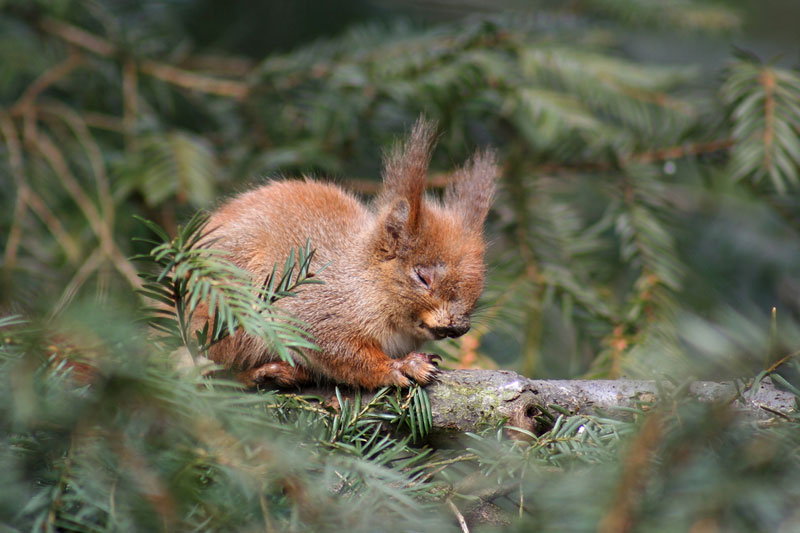Sleep Tight! Snoozing Animals Gallery
Counting Sheep, Perhaps?

Sheep sleep barely four hours a day. They usually sleep in a nearly upright position, with their front legs tucked underneath. This allows for a quick getaway in case a predator comes by while they are snoozing. Of course, sometimes they conk out lying down, like the above baby lamb.
Sleepy Squirrel

The Eurasian red squirrel has a characteristic ginger-colored coat and brush-like hairs on the tips of its ears. During the winter, they do not hibernate, but grow a thicker, somewhat grayer coat. Like foxes, squirrels use their bushy tails for warmth, wrapping the fluff around themselves as they slumber.
Dozing Bambie

Deer sleep about eight to 12 hours a day. They prefer to sleep at different locations depending on the time of day. During the night, deer sleep under trees such as pines and firs so that the low-hanging branches shelter them from wind or snow while also helping them to conserve heat. During the daytime, deer lay out in fields, meadows or other open areas of the woods, where they are warmed by the sun's rays.
Sweet Dreams

Giant pandas sleep for about 10 hours a day, spending the rest of their time foraging for or feeding on their favorite food, bamboo. Giant pandas are excellent tree climbers, and often like to rest among the branches. If a young panda cub is sleeping in a tree, the mother usually makes a bed for herself in the grass by the tree so that she can guard it from predators.
Get the world’s most fascinating discoveries delivered straight to your inbox.
 Live Science Plus
Live Science Plus





